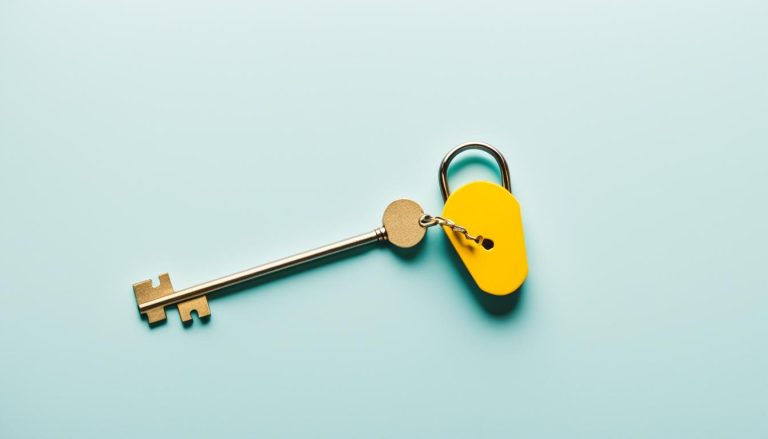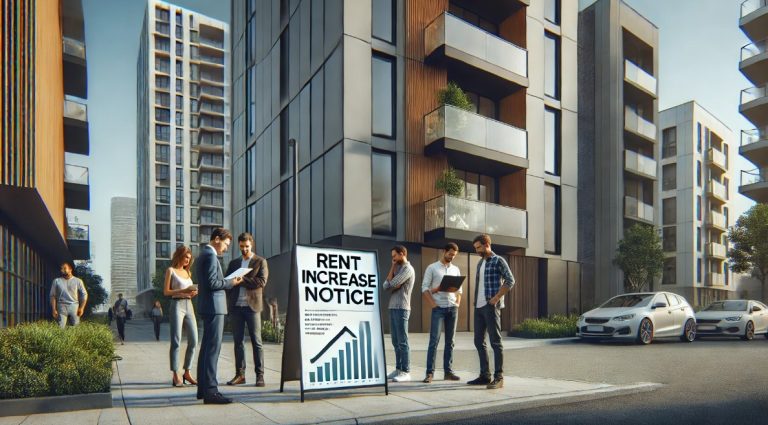When it comes to ensuring timely rent payments, the concept of Universal Credit direct payments to landlords becomes a crucial safety net. This payment method provides financial security for landlords while offering tenants peace of mind, especially those who may struggle with budgeting their benefits.
Universal Credit is a government welfare scheme aimed at supporting individuals with their living and housing costs. While the standard payment is made directly to the claimant, in some cases, rent payments can be sent directly to the landlord. This blog will explore how the process works, why it’s beneficial, and how landlords and tenants can request these payments.
What is Universal Credit Direct Payment to Landlord?

Universal Credit direct payment to a landlord is a system where the rent portion of a tenant’s Universal Credit is paid directly to the landlord instead of being paid to the tenant. This approach is particularly useful in preventing rent arrears and ensuring that landlords receive their payments on time.
Under normal circumstances, tenants are responsible for paying their rent directly to their landlord. However, if certain conditions are met, a landlord or tenant can request that rent payments be sent directly to the landlord. The Department for Work and Pensions (DWP) is responsible for managing and approving these direct payment requests.
Key concepts to understand include:
- Managed Payment to Landlord (MPTL): The term used to describe direct payments to landlords.
- Alternative Payment Arrangement (APA): A system that allows tenants and landlords to request special payment arrangements, like MPTLs, to prevent rent arrears.
The goal of this system is to support tenants who may have difficulty managing their finances and ensure that landlords receive timely payments.
Why Might a Direct Payment to a Landlord be Necessary?
A direct payment arrangement is not always the default option for tenants receiving Universal Credit. However, there are certain situations where this arrangement is considered essential.
1. Rent Arrears
When a tenant falls behind on rent payments (usually by 2 months or more), landlords can request direct payments to ensure ongoing rent payments are made while the arrears are repaid. This helps the landlord avoid further financial loss while giving tenants more time to get back on track.
2. Vulnerable Tenants
Vulnerable tenants who have difficulty managing money may benefit from direct payments. This includes tenants who:
- Have a history of rent arrears.
- Have mental health challenges or learning disabilities.
- Have addiction issues (e.g., substance misuse).
The DWP considers a tenant’s ability to manage their finances when deciding on a request for an APA.
3. Budgeting Support Needs
If a tenant struggles with managing large payments like rent, they may be referred to Personal Budgeting Support (PBS). This service helps tenants develop the skills needed to manage payments and avoid rent arrears. If the DWP sees that a tenant is struggling, they may recommend or implement direct payments to the landlord.
How Does the Process Work?

The process of setting up direct payments from Universal Credit to a landlord involves several steps. Here’s a breakdown of how it works from start to finish.
Step 1: Identifying the Need for Direct Payment
A tenant, landlord, or DWP work coach can identify the need for direct rent payments. This usually happens when:
- Rent arrears have built up (typically 2 months or more).
- The tenant is deemed vulnerable due to financial, health, or personal circumstances.
- The tenant receives help from Personal Budgeting Support (PBS).
Once the need is identified, the next step is to request the direct payment.
Step 2: Requesting a Direct Payment
After the need for a direct payment is identified, the process of making the request begins. This process depends on who initiates it:
Tenant-Initiated Requests
Tenants can request a direct payment if they believe they are unable to manage rent payments themselves. To do this, they must speak to their DWP work coach or case manager. The work coach will assess the situation and decide whether a Managed Payment to Landlord (MPTL) is necessary.
Landlord-Initiated Requests
If a tenant has rent arrears of more than 2 months, the landlord can apply for a direct payment using the UC47 form. This form allows the landlord to report the arrears and request that rent payments be sent directly to them instead of the tenant.
The UC47 form requires the following details:
- Tenant’s name and address.
- Evidence of the rent arrears (e.g., rent statements).
- Bank account details for receiving payments.
Once submitted, the DWP will review the request, and both the landlord and tenant will be notified of the outcome.
Step 3: Approval and Payment Process
Once the DWP approves a direct payment, the process moves forward.
- How Payments Are Made: Payments are made directly to the landlord’s bank account.
- Frequency of Payments: Payments follow the same schedule as the tenant’s Universal Credit payments (usually monthly).
- Notification: Both the tenant and landlord are notified of the change in payment.
If the request is denied, tenants and landlords have the option to appeal the decision by providing additional evidence to support their case.
How Can Landlords Request a Managed Payment from Universal Credit?

A Managed Payment to Landlord (MPTL) is a process where rent payments from Universal Credit are sent directly to the landlord instead of being paid to the tenant. This method provides landlords with financial security, especially when tenants are at risk of rent arrears or face challenges in managing their finances.
If a landlord needs to request a managed payment, they must follow a formal process set by the Department for Work and Pensions (DWP). This process involves contacting Universal Credit, submitting a request, and providing the necessary documentation. Below is a step-by-step guide on how landlords can request a managed payment.
Step 1: Contact Universal Credit
The first step for landlords is to contact Universal Credit by phone. The dedicated Universal Credit support line for landlords is:
📞 0845 6000 723
When contacting Universal Credit, landlords should inform the agent of the following:
- Reason for the Request: Mention that the tenant has rent arrears or requires a managed payment due to their vulnerability.
- Request for a Managed Payment: State that you would like to request a Managed Payment to Landlord (MPTL) under the Alternative Payment Arrangement (APA) system.
The Universal Credit agent will provide instructions on the next steps. They will explain the information and documents that the landlord needs to submit.
Step 2: Submit a Written Request for a Managed Payment
After the initial phone call, landlords are required to submit a written request. This written request serves as formal documentation of the landlord’s request for direct payments.
The following details and supporting documents are required:
- Tenant’s Information:
- Tenant’s full name.
- Tenant’s address (the property where rent is owed).
- If known, include the tenant’s date of birth and National Insurance number (this makes it easier for the DWP to identify the tenant’s Universal Credit claim).
- Tenancy Agreement:
- A copy of the current tenancy agreement.
- The tenancy agreement should show the rent amount, payment terms, and any other relevant conditions of the tenancy.
- Proof of Rent Arrears:
- Provide evidence of rent arrears, which must show:
- Amount of rent outstanding (total arrears).
- Amount of rent due each calendar month (the regular monthly rent amount).
- This can be in the form of a rent statement, rent ledger, or any document that shows rent payments made and missed.
- Provide evidence of rent arrears, which must show:
- Landlord’s Contact Information:
- Full name and address of the landlord or agent acting on behalf of the landlord.
- Bank account details where payments will be received.
- Bank account number.
- Sort code (for payment transfers).
- Reference Number (if applicable):
- If the landlord has a unique reference number or transaction ID for the tenant, this should be included. This helps Universal Credit process the payment faster and link it to the correct tenancy.
- Arrears Recovery Request (Optional):
- Landlords should state if they also want to recover arrears payments from the tenant’s future Universal Credit payments.
- In some cases, Universal Credit can deduct a small percentage of the tenant’s payments each month to repay arrears directly to the landlord.
Step 3: Send the Documents to Universal Credit
Once all the required information and supporting documents have been gathered, the landlord must submit them to Universal Credit. The submission process may vary, but it typically involves one of the following methods:
- Online Submission (if available via the Landlord Portal).
- Email Submission (if instructed by Universal Credit).
- Postal Submission (the agent on the phone will provide the mailing address if applicable).
If landlords have access to the Universal Credit Landlord Portal, they may be able to submit the documentation online and track the progress of their request.
Step 4: Wait for a Decision from Universal Credit
Once Universal Credit receives the landlord’s request, they will assess the situation. The DWP will review the documentation and decide if a Managed Payment to Landlord (MPTL) is appropriate.
What Happens Next?:
- Notification to Landlord and Tenant:
- If the request is approved, both the landlord and the tenant will receive a written notification.
- This letter will explain when payments will start, the frequency of payments, and how the payments will be sent.
- Personal Budgeting Support for the Tenant:
- As part of the process, the tenant will be offered Personal Budgeting Support (PBS). This helps them manage their finances better to prevent future rent arrears.
- Denial of the Request:
- If the request is denied, the landlord will be informed of the reason for the denial.
- Landlords can appeal the decision by submitting additional evidence to prove that direct payments are necessary.
Summary of Required Documents
To make the process easier, here is a summary of all the documents landlords must provide:
| Required Document | Details |
| Tenant’s Details | Full name, address, date of birth, National Insurance number (if known) |
| Tenancy Agreement | A signed tenancy agreement showing rent amount and payment schedule |
| Proof of Rent Arrears | Document showing the total arrears and monthly rent due (rent ledger or statement) |
| Landlord’s Bank Details | Bank account number, sort code, and name of the bank/building society |
| Reference Number | Reference ID or transaction number (optional) |
| Arrears Recovery Request | Landlord must state if they want to recover arrears payments via Universal Credit |
What Happens If the Request is Rejected?
If Universal Credit rejects the landlord’s request for a managed payment, they will notify both the landlord and the tenant. The DWP usually provides a reason for the rejection, such as:
- Insufficient evidence of arrears.
- Tenant not considered vulnerable.
- Request submitted incorrectly (e.g., missing documents).
If this happens, landlords can take the following steps:
- Appeal the Decision: Contact Universal Credit and request a review.
- Submit Additional Evidence: Provide more proof of rent arrears, such as bank statements, screenshots of missed payments, or letters of complaint from the tenant.
Benefits of Requesting a Managed Payment
Requesting a Managed Payment can offer several benefits for both landlords and tenants:
For Landlords:
- Financial Security: Ensures rent payments are sent directly to the landlord, reducing the risk of missed payments.
- Fewer Arrears: Landlords can request that arrears be paid back through the tenant’s Universal Credit.
- Simplified Payment Tracking: Payments are made directly into the landlord’s bank account, providing a clear payment history.
For Tenants:
- Reduced Financial Pressure: Tenants don’t have to worry about remembering rent payments.
- Personal Budgeting Support (PBS): Tenants are offered guidance on managing their finances.
- More Secure Housing: Ensuring rent is paid directly to the landlord reduces the risk of eviction.
Key Tools and Resources for Landlords and Tenants

1. Landlord Portal
The Landlord Portal is a secure online platform where landlords can access rent payment information. It allows them to track payments, submit rent arrears reports, and communicate with the DWP. This tool simplifies the management of direct payments for landlords.
2. Personal Budgeting Support (PBS)
The Personal Budgeting Support (PBS) program offers guidance and support to tenants who struggle to manage their finances. It aims to teach financial literacy and ensure tenants can manage their Universal Credit payments effectively.
Challenges and Solutions
1. Delays in Payments
Problem: Delays can happen due to processing issues, incomplete forms, or technical problems.
Solution: Landlords should use the Landlord Portal to track payment progress.
2. Rejected Direct Payment Requests
Problem: The DWP may reject direct payment requests if they believe the tenant can manage their finances.
Solution: Landlords can appeal the decision by submitting additional evidence of rent arrears or a letter from a support agency.
3. Appeals Process
Problem: If the request is denied, landlords or tenants may feel frustrated.
Solution: Submit an appeal to the DWP, providing more evidence and supporting documentation.
Conclusion
Direct payments to landlords through Universal Credit provide essential financial stability for both tenants and landlords. By ensuring rent is paid directly, tenants can avoid arrears, while landlords can have peace of mind that their rental income is secure.
The process involves filling out forms, submitting evidence, and waiting for DWP approval. Tools like the Landlord Portal and Personal Budgeting Support (PBS) offer additional support to help manage the process.
FAQs About Universal Credit Direct Payments
How long does it take for a direct payment request to be processed?
It usually takes 2-4 weeks for the DWP to review the request and set up a direct payment.
What is the UC47 form, and how do I submit it?
The UC47 form is a document landlords fill out to request direct payments. It includes information on rent arrears and landlord payment details.
Can a landlord apply for direct payments on behalf of a tenant?
Yes, landlords can submit the UC47 form to request payments directly to their bank account.
What happens if a direct payment is delayed or missed?
If payments are delayed, landlords should contact the DWP through the Landlord Portal.
Can I switch back to receiving payments myself instead of my landlord?
Yes, tenants can request to switch back, but they need to prove they can manage rent payments independently.
Are landlords legally required to use the Landlord Portal?
No, but it makes it easier to track payments and receive notifications.
How does rent arrears impact eligibility for direct payments?
If rent arrears reach 2 months, landlords can request direct payments from Universal Credit.





